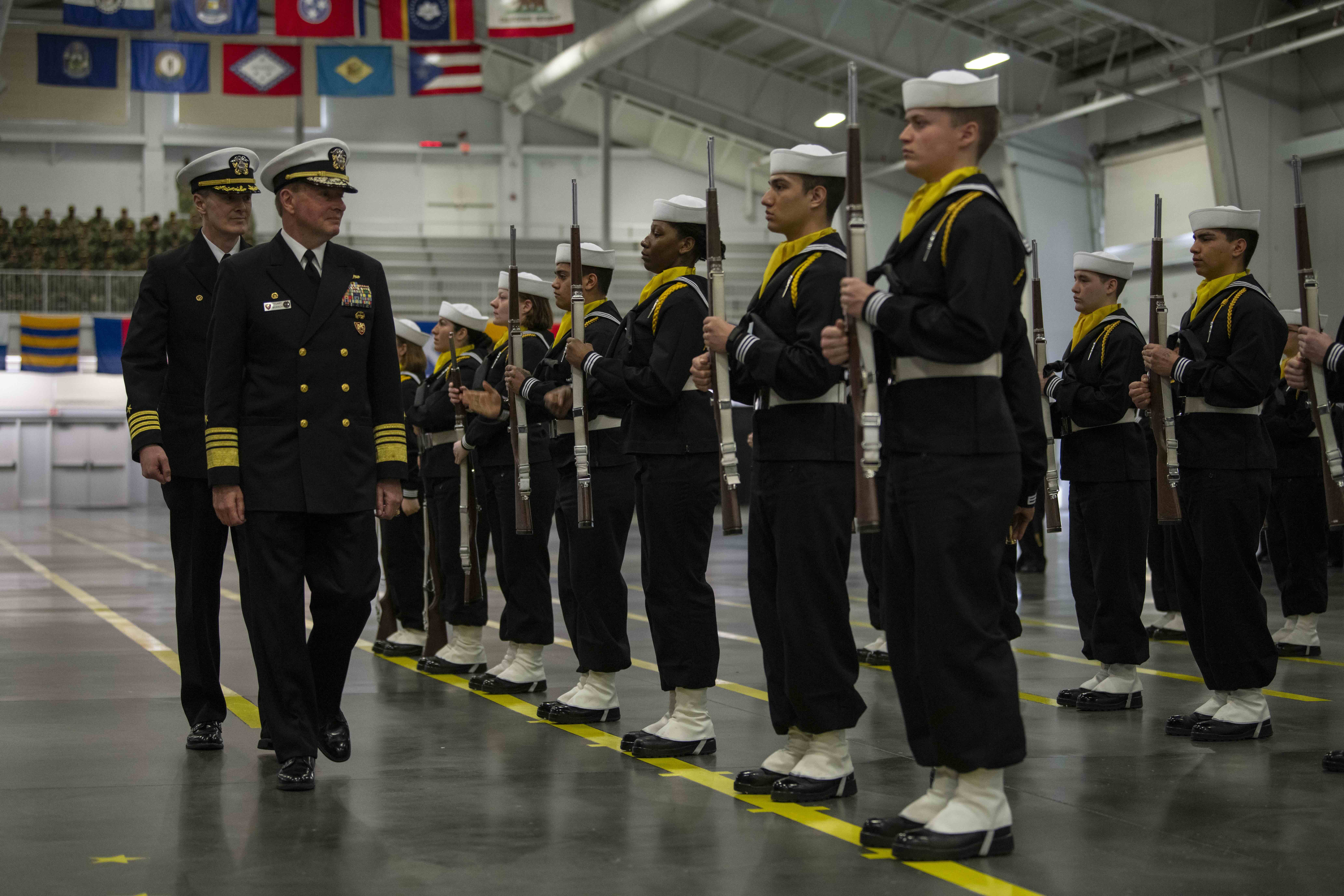
The Navy exceeded retention goals for Fiscal Year 2022 and is on track to beat them in Fiscal Year 2023, according to data from the Office of the Chief of Naval Personnel obtained by USNI News.
The sea service finished the fiscal year at 107 percent of its goal for retaining sailors in Zone A, which is sailors with one month of service through six years, Lt. Rachel Maul, a spokesperson for the Chief of Naval Personnel office, told USNI News. For Zone B, or sailors with six to 10 years of service, the Navy met 106 percent of its goal. For Zone C, which is sailors that have 10-14 years of service, the sea service hit 109 percent of its goal.
As of December 31, the sea service is also on track to exceed retention goals, Maul said in her email. The Navy was 23.5 percent over its December target for Zone A – 4,953 sailors out of the 4,012 goal –2.14 percent over target for Zone B – 2,008 out of the goal of 1,966 – and 5.26 percent above the goal for Zone C – 1,421 out of the 1,350 goal.
The FY 2022 end strength for active-duty sailors was 286,487, USNI News previously reported. The Navy said it would need to recruit 37,700 new sailors in order to meet the end strength projected for FY 2023. The Navy’s spring budget proposal had 347,484 as the end strength for the current fiscal year.
But while the Navy has been able to meet its retention goals, it continues to struggle with gaps in at-sea billets. Maul told USNI News that the Navy does currently have empty billets on operational units, but she did not have a specific number.
“The number, however, is not static; it varies based on planned personnel movements (such as PCS, ship decommissionings, and ships moving into the maintenance Phase) and unplanned personnel movements (such as limited duty and administrative separations), which impact the number on any given day,” Maul told USNI News.
In October 2022, the number of at-sea billets was 9,000, USNI News previously reported, one of the highest since 2016, when gaps were at 792.
The sea service introduced a number of initiatives in 2022 to address misalignment between promotion and personnel distribution, which the Navy has blamed as one of the causes for the high number of gaps. The service is shifting to a billet-based advancement system, USNI News previously reported.
One of the reasons for the move is that the Navy does not currently move sailors into positions immediately following promotion, Maul said. There are nearly 4,000 sailors with E-7 to E-9 ratings in billets that are below their pay grades, as of September 2022, she said.
“This misalignment results in a need to constantly manually move Sailors through the detailing processes, type commander (TYCOM) manning actions and senior enlisted assignment optimization processes,” Maul said in the email.
The Navy is changing to the billet-based promotion system through pilots, including the Detailing Marketplace Assignment Policy, Senior Enlisted Advancement to Position, Command Advance-to-Position, Advance-to-Position and the Senior Enlisted Marketplace.
Eventually, the billet-based promotion system will be the standard for the Navy, Maul said.
Monetary and non-monetary incentives are expected to be a part of the new system, which will help give sailors more control, including, in some cases, more stability when it comes to moving.
“Transforming the Navy enlisted advancement and distribution systems into a robust, billet-based marketplace will decrease billet gaps and increase Fleet readiness to ensure the right sailor, with the right skills, is in the right billet to meet the mission,” Maul said to USNI News. “Billet-based advancements are expected to reduce inefficiencies and these critical gaps by aligning advancement quotas more towards sailors willing to take orders to operational assignments for a full tour, rather than advancing sailors first and then distributing those who don’t separate to operational assignments.”





